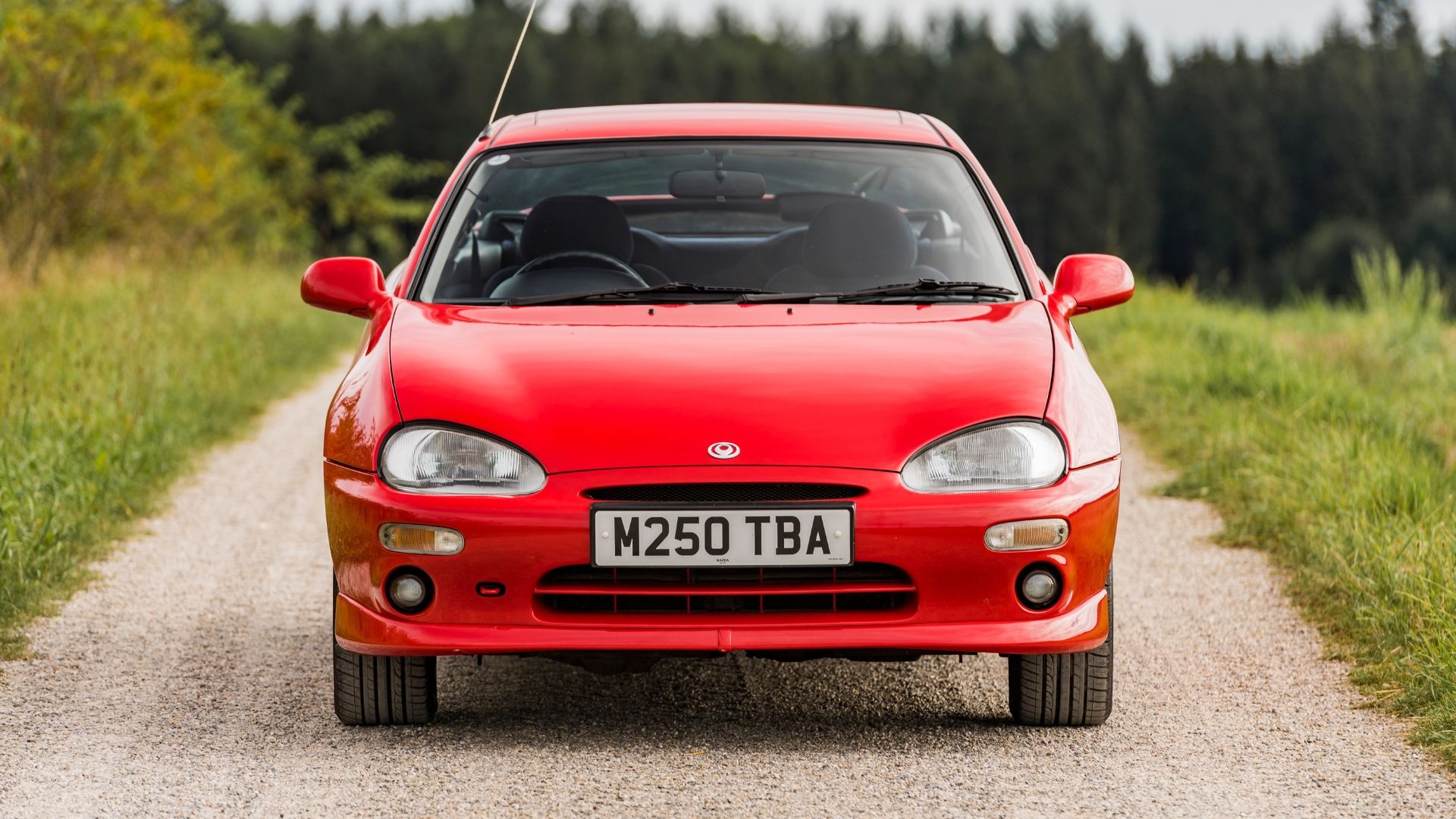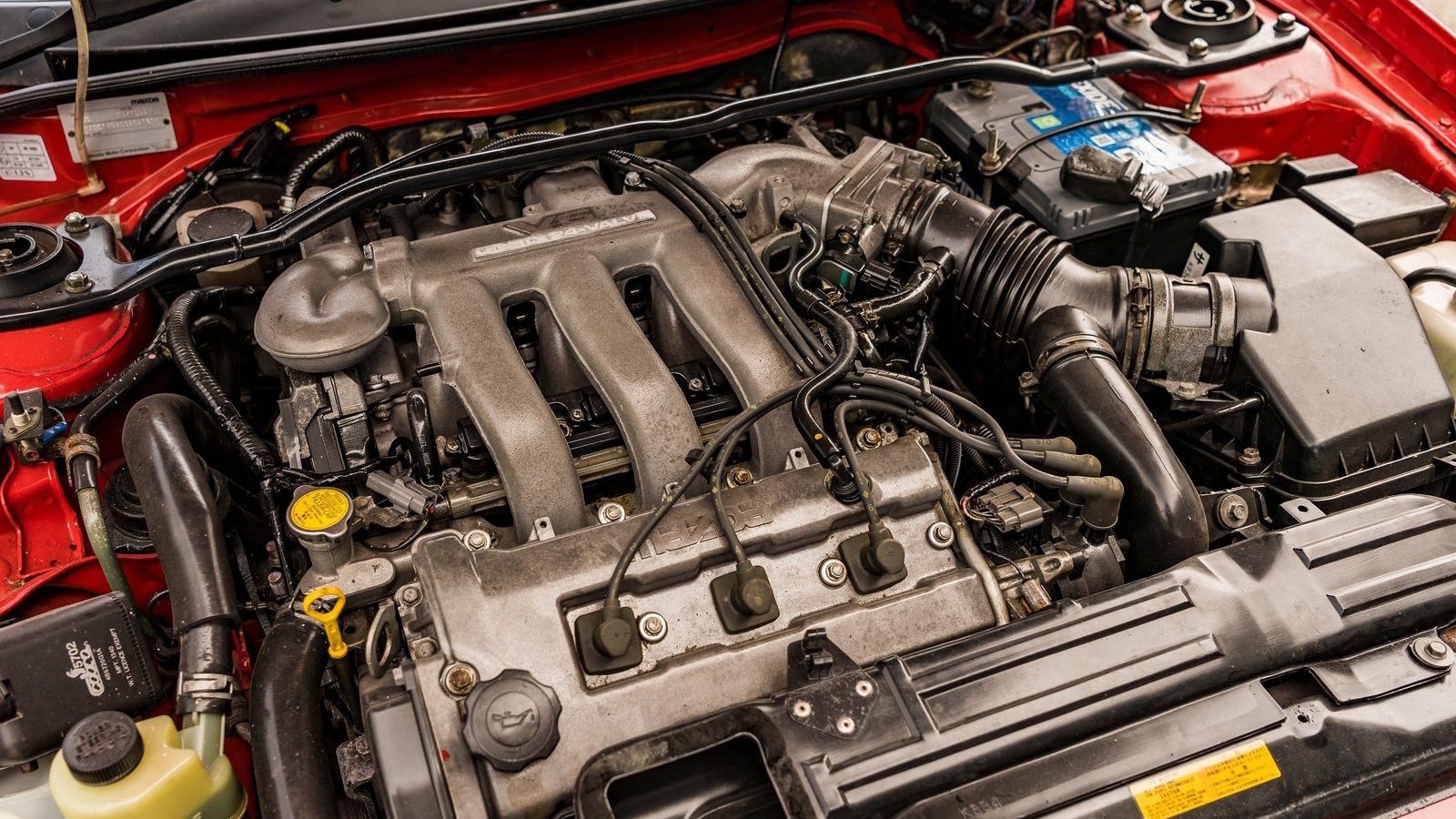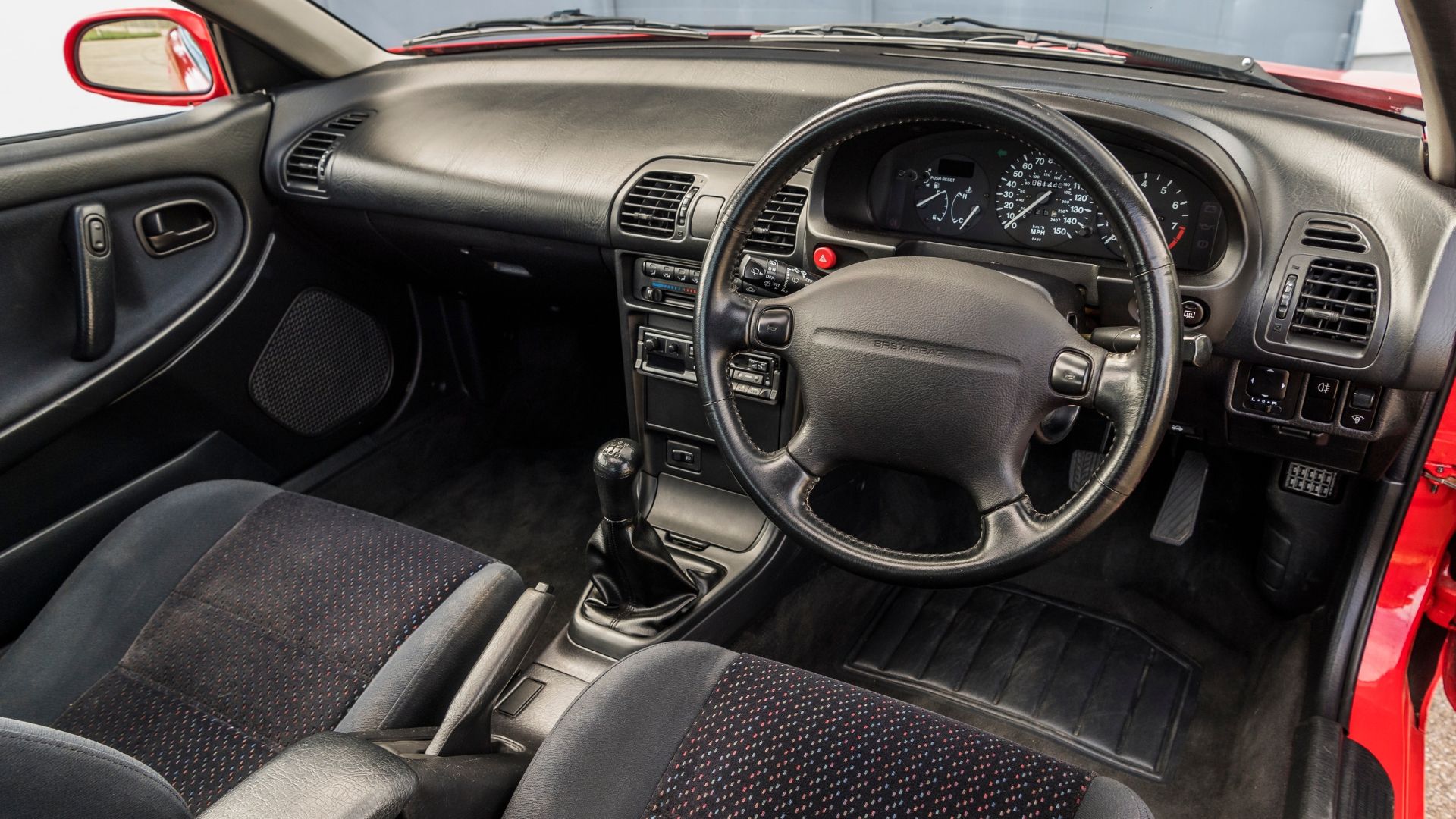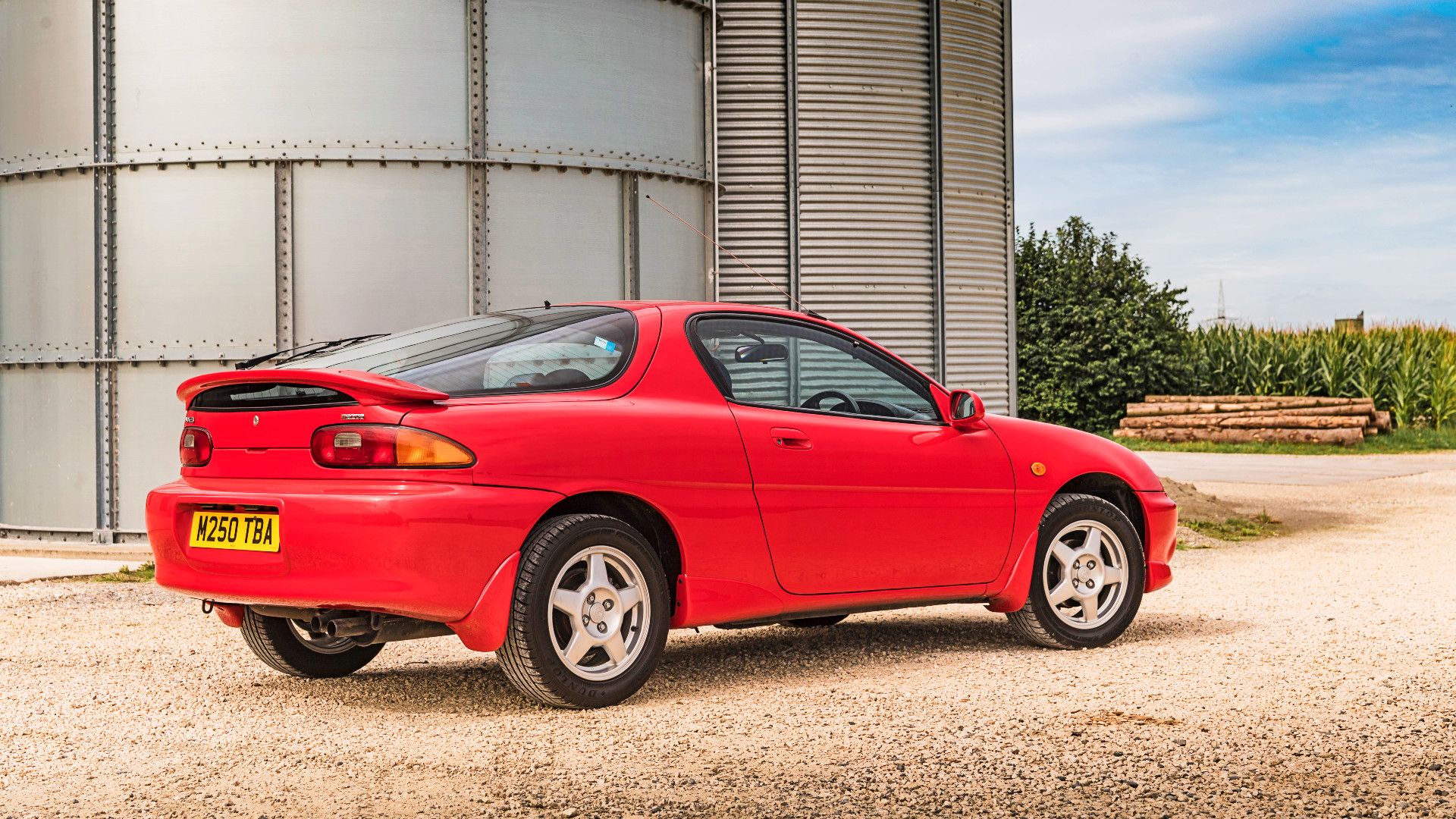Summary
- The Mazda MX-3 was a unique sports coupe from the 90s with a small V-6 engine, setting it apart from competitors.
- The MX-3 featured a brilliant aerodynamic design, a practical interior, and an innovative suspension system for exceptional handling.
- Special edition models and aftermarket mods make the MX-3 still relevant today among enthusiasts and collectors.
In the early 1990s, Mazda introduced a sports car that would later be regarded as a hidden gem among sports coupes that was well ahead of its time: the MX-3. This model was launched in 1991 as a 1992 model and was a bold attempt by Mazda to capture the hearts of driving enthusiasts with a blend of performance, style, and innovation rarely seen in its segment.
The 90s were a competitive era for sport compacts, with automakers from around the globe battling for the attention of a young, enthusiastic demographic eager for cars that were fun to drive without breaking the bank. The Mazda MX-3 stood out in this crowded market as a sporty, well-designed coupe that offered something different from the typical front-wheel-drive compact cars of the time. It was an affordable sports car that did not compromise on performance or useability, which was an exciting prospect for consumers.
The MX-3 was unique in the segment and offered features that most brands couldn’t. The world’s smallest V-6, special edition models, and a high level of customization and modification potential helped the MX-3 stand out, and maintain its status as a highly sought-after model even today.
In order to give you the most up-to-date and accurate information possible, the data used to compile this article was sourced from various manufacturer websites and other authoritative sources.
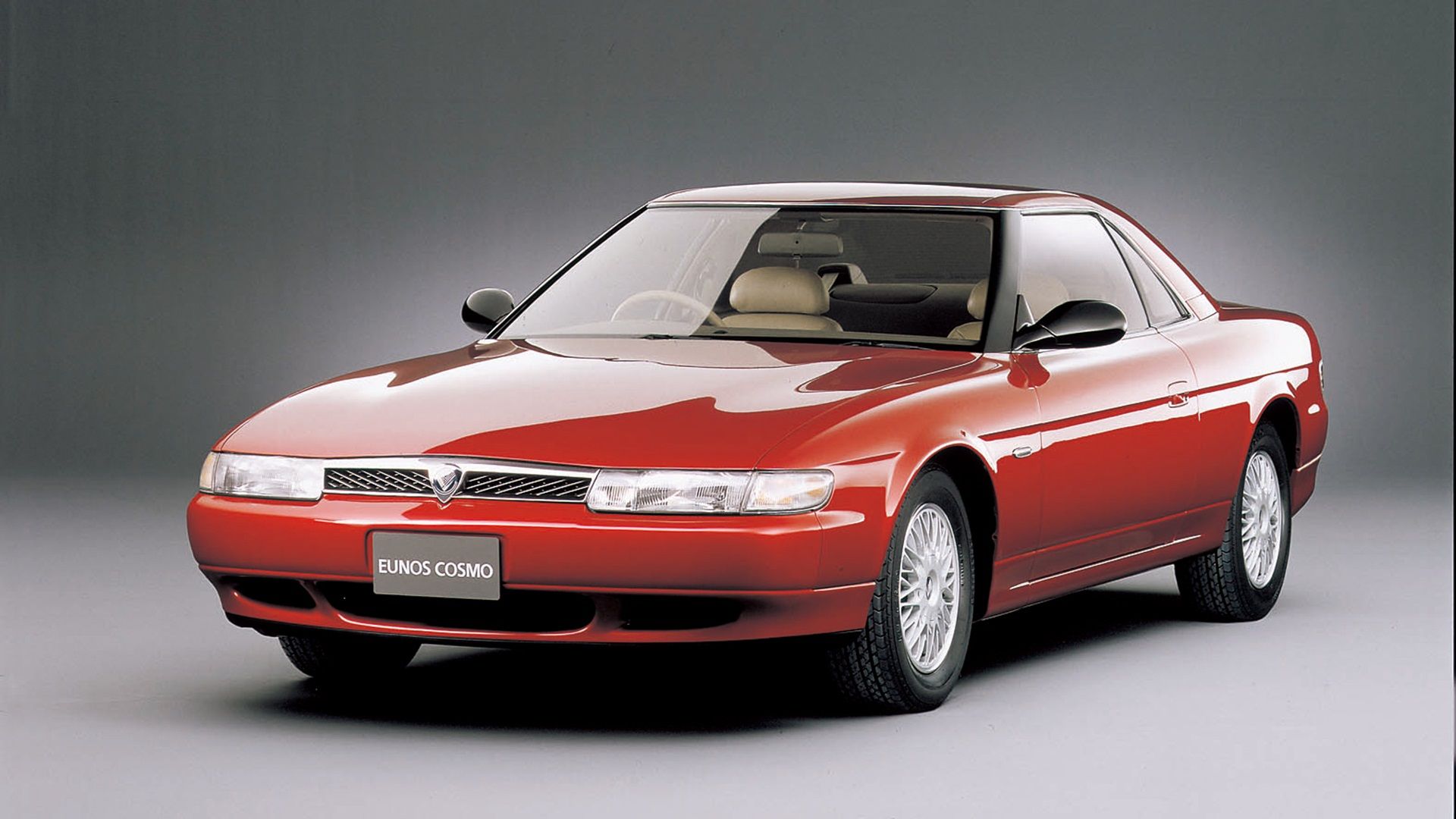
Eunos Cosmo: Mazda’s Forgotten Rotary Sports Coupe
With technological innovations that were well ahead of their time, the Eunos Cosmo was a Luxury Sports Coupe built to rival the Mercedes SL in the 90s
The Impactful 90s MX-3
The Mazda MX-3 was produced from 1992 to 1998 and carved a unique niche in the 90s auto market. This era of car making was marked by intense competition between compact sports coupes, which was a segment that pushed innovation and emphasized balancing performance with affordability. The Mazda MX-3 had distinct features and performance capabilities and stood out for several reasons, including its use of one of the smallest V-6 engines available at the time.
This iconic sports coupe marked the car world forever despite its relatively short-lived production run. The MX-3 lives on in the garages of enthusiasts and tuners and is still among the most sought-after models from Mazda’s 90s lineup.
The MX-3 Vs. The World
The MX-3’s unique selling point was its V-6 engine option, the K8-DE and later K8-ZE, which was uncommon for compact sports coupes of the time. This engine provided superior power and a smoother driving experience compared to many of its four-cylinder competitors, and along with the car’s sleek design and handling characteristics, set the MX-3 apart in a crowded marketplace.
The competitors of the MX-3 included models like the Honda CR-X, Toyota Paseo, and the Ford Probe, which were each designed to reflect the manufacturer’s idea of what a compact sports coupe could be. The MX-3’s emphasis on a sporty driving experience and distinctive styling helped it carve out its niche, but it faced stiff competition from these rivals, as many were more recognized brand names, had more varied performance options and trims, or had more aggressive marketing strategies.
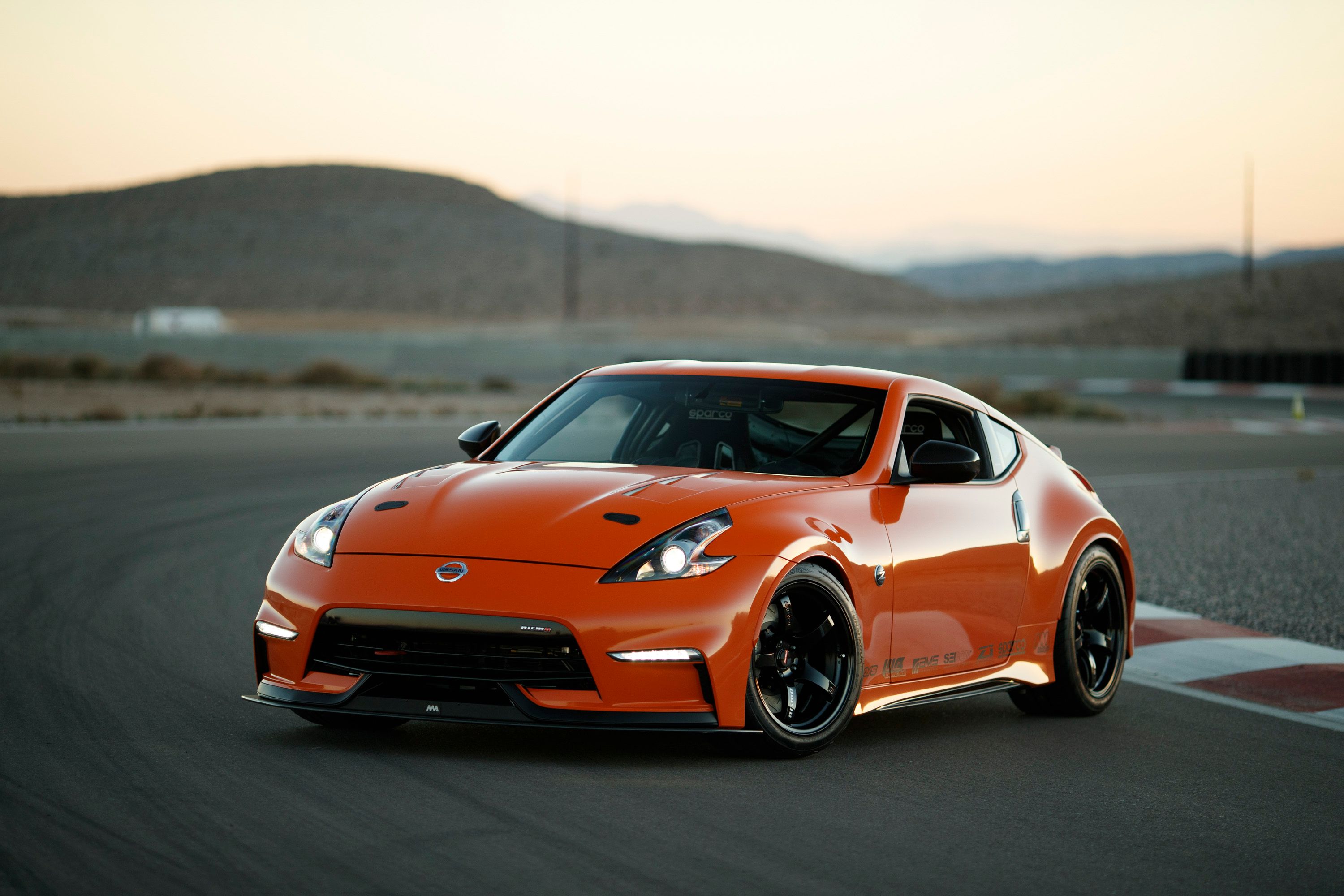
Rare Versions Of Japanese Cars You Didn’t Know Existed
These are some of the rarest special versions of popular Japanese sports cars
The MX-3’s Innovative Design And Engineering
The Mazda MX-3 was a great example of Mazda’s commitment to innovation in design and engineering. This coupe had distinctive features that set it apart from other models of the time, including a uniquely aerodynamic design that was rarely seen on this type of car at the time, and a groundbreaking V-6 engine that changed automaker’s ideas of what sport coupes could be.
The design and engineering of the MX-3 are what make it a stand-out vehicle even today, and what has kept such a short-lived coupe in relevancy more than two and a half decades after it was discontinued.
The World’s Smallest V-6 Engine
The engine used in the Mazda MX-3 was a groundbreaking advancement and defined the performance that enthusiasts came to expect from Japanese sports coupes. This engine was part of the Mazda K-series and was the smallest V-6 engine to be used in a production car at the time.
This version of the K-series V-6 used a Variable Length Intake Manifold (VLIM), which increased engine power and torque while reducing fuel consumption. Mazda’s implementation of the VLIM, called the “Variable Resonance Induction System” (VRIS), specifically optimized the engine’s torque output using intake resonance, enhancing the engine’s performance across different RPM ranges.
The DOHC 24-valve 60° V-6 in the MX-3 had a displacement of 1.8 liters and produced 130 horsepower at 6,500 RPM. Despite its compact size, the engine delivered respectable performance and was capable of propelling the coupe to a top speed of 126 MPH in European spec and achieving acceleration from 0 to 60 MPH in 8.2 seconds in the U.S.-spec MX-3. This combination of size, power, and innovative engineering proved Mazda’s ability to push the boundaries of conventional automotive designand set the MX-3 apart from its competition.
The MX3’s Clever Aerodynamics And Compact Design
Aerodynamics and a compact design were the key focus elements of the exterior of the MX-3. This design focus resulted in sporty aesthetics and practical features. The exterior of the coupe was sleek, with body contours that reduced air resistance and contributed to its impressive performance figures.
The interior of the Mazda had a practical 2+2 seating configuration with rear seats that were actually usable, ensuring that the coupe did not entirely forsake passenger comfort while still maintaining a sporty profile and aesthetic. This is another way that the MX-3 stood out from the pack, as few other models in the segment could boast this level of practicality.
The compact and aerodynamic design of the MX-3 contributed to its handling characteristics. A low center of gravity and a lightweight body allowed for nimble maneuvers and stable high-speed handling. The vehicle’s engineering focus on balance and dynamic performance enabled drivers to exploit the full potential of the engine’s output, whether navigating tight corners or accelerating on straightaways.
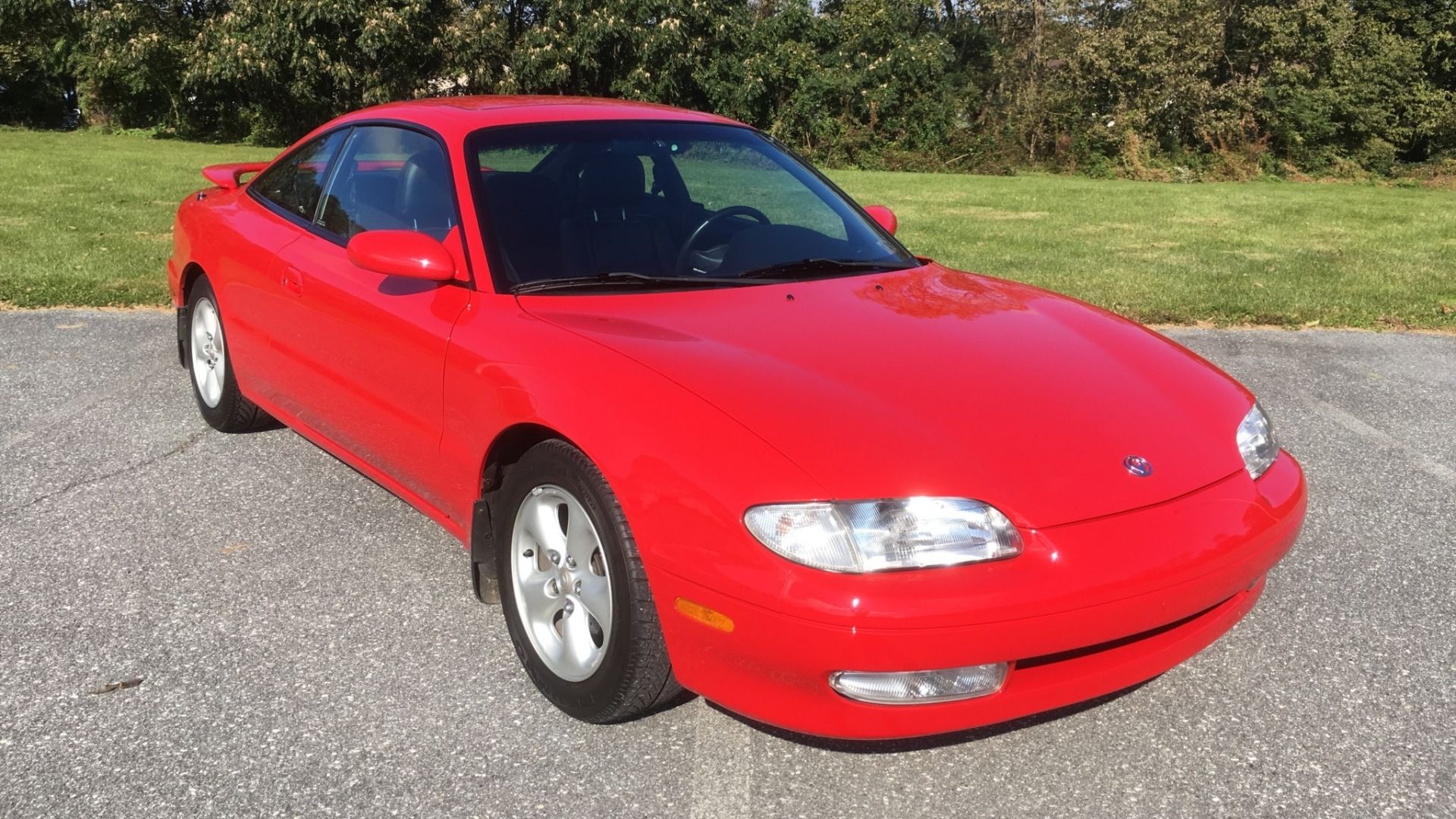
10 Things You Need To Know About The Forgotten Mazda MX-6
Obscured by its more popular sibling, find out exactly what makes the Mazda MX-6 an, often overlooked JDM gem
The MX-3’s Performance And Handling
Handling And Suspension Performance
The MX-3’s handling and suspension setup was critical to its overall performance. This suspension system delivered a good balance between comfort and agility, as it provided a smooth ride that was ideal for daily driving but without compromising on responsiveness or cornering ability. These handling attributes made the MX-3 a favored choice for drivers looking for an engaging driving experience that could comfortably navigate both city streets and winding back roads.
Mazda employed its Twin-Trapezoidal Link (TTL) technology in the MX-3’s suspension system, which was another advantage the vehicle had over its competitors. This proprietary technology provided benefits that were similar to active four-wheel steering systems but were lighter and less mechanically complex. This innovative tech significantly enhanced the MX-3’s handling capabilities, making it one of the best in its class for driving dynamics.
Impressive engine performance and handling characteristics made the MX-3 a standout model in the sport coupe segment of the 90s. The good range of engine options and a suspension system designed for an engaging driving experience have kept this coupe relevant for enthusiasts and maintained its unique position in Mazda’s lineup.
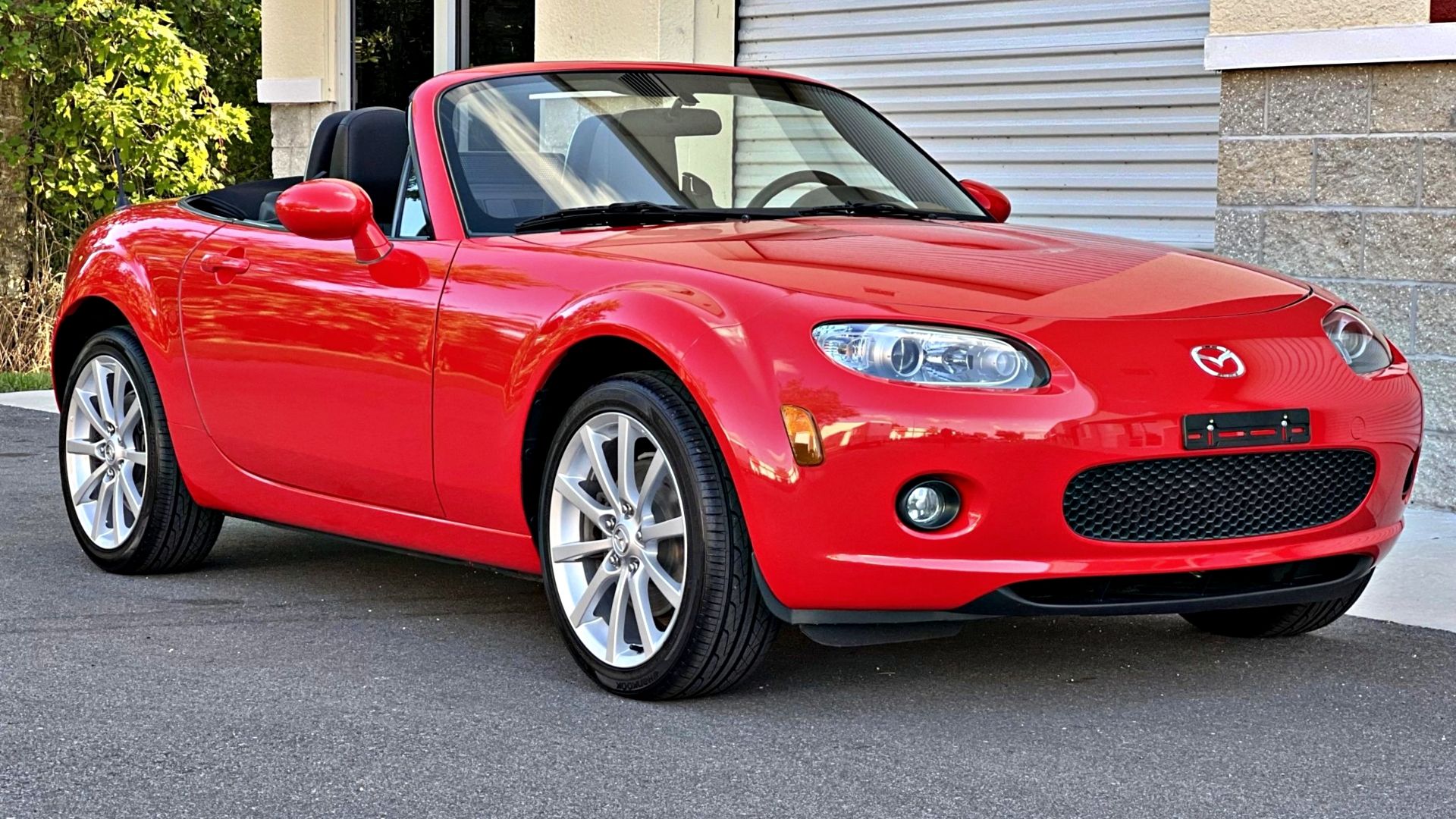
Top 15 Must-Have Modifications For Your Mazda MX-5 Miata
The Mazda MX5 Miata is one of the most popular sports cars ever made, and these 15 modifications will modernize the older models
MX-3 Special Editions And Modifications
The MX-3 made its mark on the industry for its performance and distinctive styling, but the special editions of the MX-3 and its potential for aftermarket modifications made it much more versatile and appealing to enthusiasts.
Several special editions of the MX-3 were released over its short lifespan, which were made with special features that included unique exterior changes, bespoke paint colors, limited availability, and even quality-of-life improvements that were not standard on the regular-release models. These special editions and the available aftermarket upgrades for the MX-3 made it a favorite in the tuning and modding communities and keep it a favorite of enthusiasts to this day.
Special Edition Models
Among the most notable special editions of the MX-3 is the model made in 1993 to celebrate Mazda’s 25th year in Canada. This model was sold exclusively in North America and featured several exclusives that were not included in standard models. These exclusive features included heated leather seats, a 25th-anniversary logo on the driver’s side floor mat as a decal on the front fender, and a power package that had powered door locks, powered windows, and a powered sunroof. The model sold in the U.S.A. also had powered seatbelts.
Every special edition had several unique characteristics and features not found on the standard MX-3. Other special features included black leather-trimmed upholstery, leather-wrapped steering wheels, and 15×6-inch custom alloy wheels. Some models had exclusive special features that were not available on any other versions of the MX-3, such as the Raspberry Metallic paint that was only available for the V-6 versions of the coupe.
MX-3 Aftermarket Mods
Aftermarket modifications are popular for Japanese sports cars, but the MX-3 was among the first to draw attention in this regard and is a reason why this coupe maintains desirability today. The MX-3 has immense potential for customization, but the ease of performing engine swap mods for this coupe is a significant attraction for enthusiasts. The example seen in the post above features twin engines.
The car’s compact and lightweight chassis makes it an ideal candidate for swapping in more powerful engines, such as those from the larger Mazda 626 or even rotary engines from the Mazda RX-7. The MX-3’s modification potential extends to suspension upgrades, brake enhancements, and custom body kits. These mods can improve the vehicle’s performance but also allow for a high degree of personalization, making each modified MX-3 a unique expression of its owner’s tastes and preferences.
The aftermarket community has embraced the MX-3, developing a wide range of performance parts and accessories that enable owners to enhance horsepower, improve handling, and customize the appearance of their vehicles. Simple modifications like intake and exhaust systems are popular for the vehicle, but more extensive upgrades such as turbocharging kits and custom interior work are common as well.
The Mazda MX-3’s appeal is bolstered by its special edition models and the extensive possibilities for aftermarket modifications. Whether preserved in its special edition form or customized to the owner’s liking, the MX-3 continues to be a cherished model in the automotive community for its versatility, performance potential, and unique character.
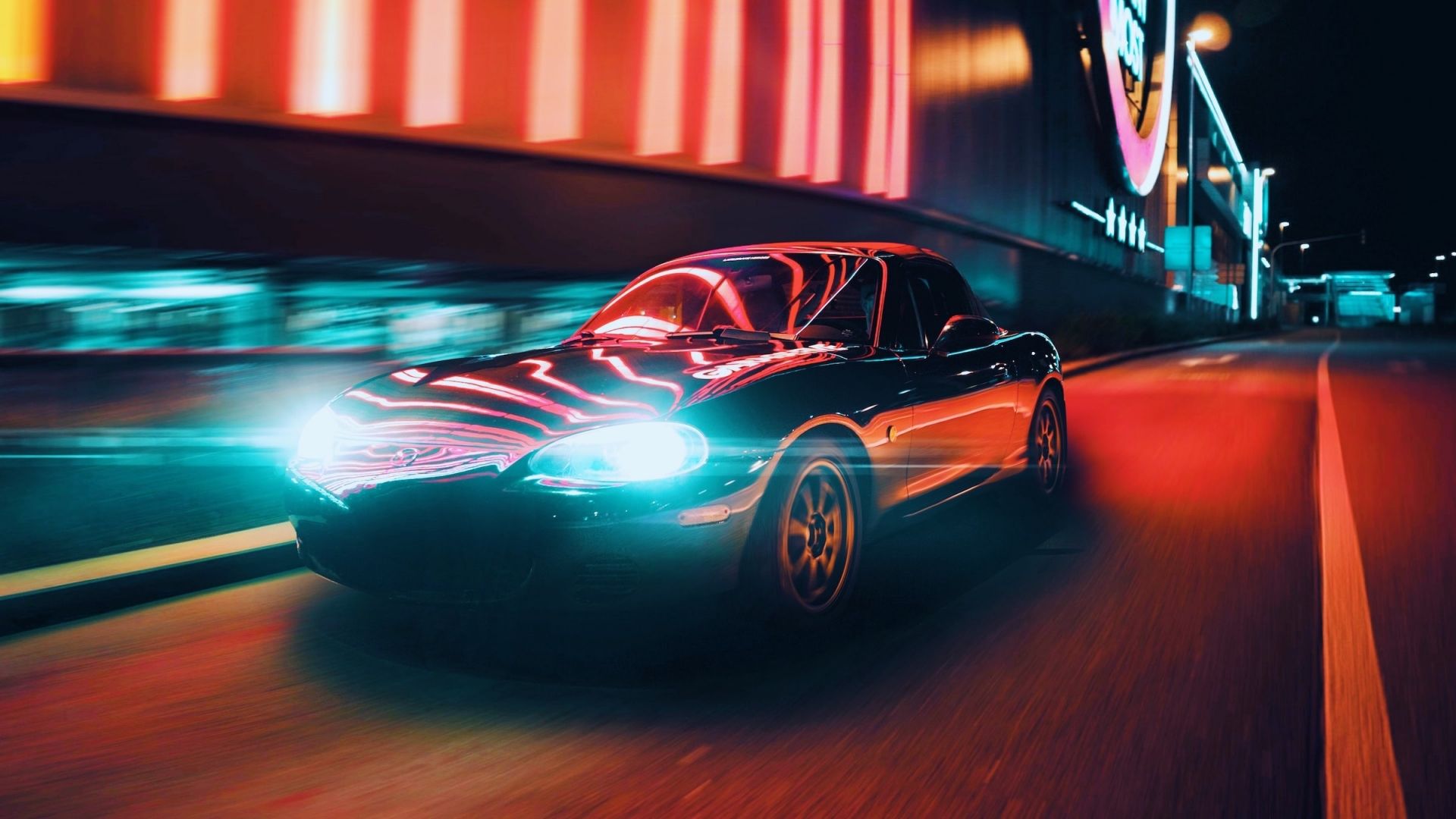
History Of Mazda Sports Cars: Past, Present, And Future
From cork-manufacturing to rotary rockets, this is what the history and future of Mazda sports cars look like
The Decline And Discontinuation Of The MX-3
The impressive MX-3 was something special in its time, but its production run was much shorter than expected, as it was discontinued in 1998, only six years after it first rolled out of the factory. The discontinuation of the MX-3 was due to several factors, but changing market tastes played the most significant role.
The late 90s saw a shift in consumer preferences towards SUVs and larger vehicles, which left smaller sports coupes with a shrinking market share. Other considerations are economic factors, such as the Asian financial crisis in the late 90s that impacted Mazda and other Japanese automakers, which led to a reevaluation of their product lines and the discontinuation of less profitable models.
The MX-3’s market performance towards the end of its production run reflected these challenges. Despite a passionate fan base and a reputation for its driving dynamics and unique V-6 option, sales began to decline. The automotive market’s evolution, combined with economic pressures, led Mazda to focus on more profitable and popular models, such as the MX-5 Miata, and later, its SUV lineup.
The MX-3’s Legacy
The MX-3’s legacy is highlighted by its unique position in the compact sports coupe market of the 90s. The unique style, performance, feel, and features of the MX-3 leave it remembered fondly by enthusiasts. The novelty of its small V-6 engine and the engaging driving dynamics it had for a car of this era have left their mark on the legacy of Japanese sports cars.
Today, the Mazda MX-3 enjoys a cult following among enthusiasts and collectors who appreciate its flair and unique features. Market data reflects the MX-3’s niche appeal, as sale prices for this coupe vary widely based on condition, mileage, and the presence of the sought-after V-6 engine. Even though it never reached the iconic status of some of its contemporaries, the MX-3 remains a beloved part of Mazda’s historical lineup.


